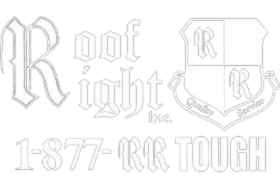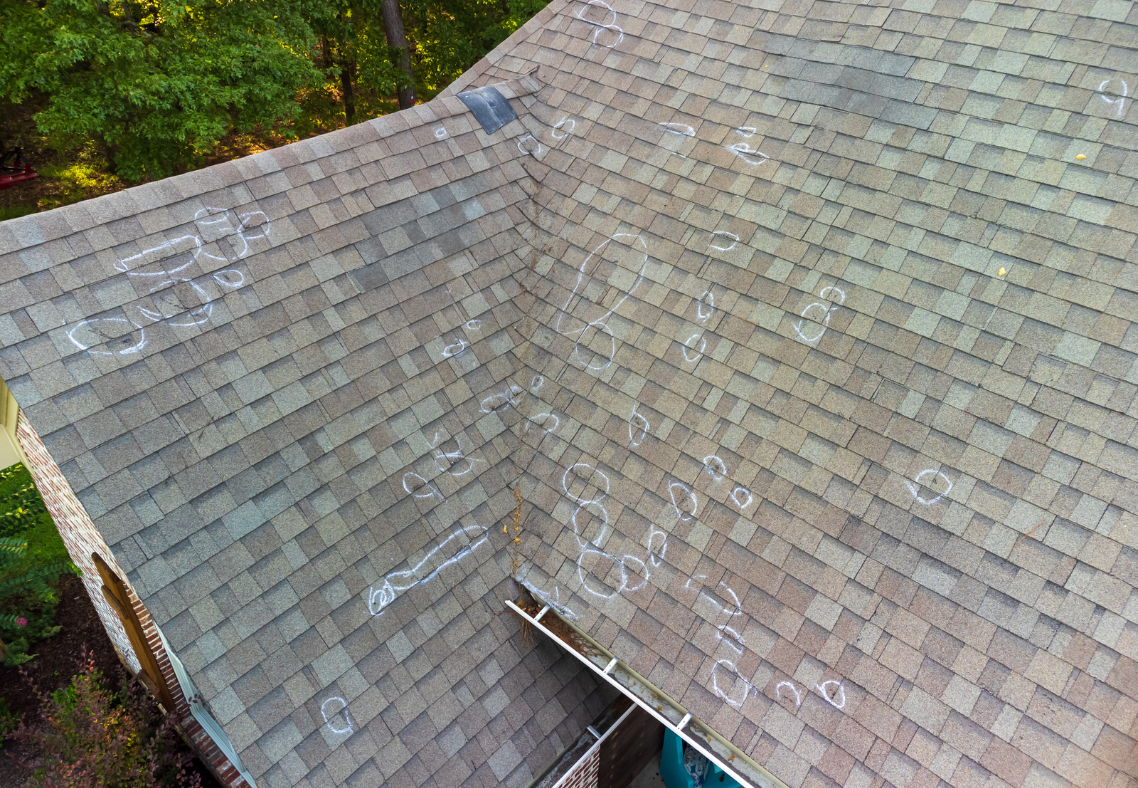What Does Hail Damage Look Like On A Roof?
Roof Right: Exterior Home Remodeling Specialists in Maryland Contact UsSchedule A Free EstimateHail storms can cause significant damage to roofs, affecting not only the appearance but also the longevity and functionality of your roofing system. However, hail damage is not always easy to identify, and sometimes, it’s hard to tell if your roof has been impacted. Large hail will often leave visible dents or dings on shingles, but smaller hail can also cause harm that’s not immediately apparent. Understanding how to identify hail damage, even if it’s not obvious, can help Maryland homeowners protect their roofs and take timely action.
Answering The Question: What Does Hail Damage Look Like On A Roof?
Identifying Hail Damage on Your Roof
Hail damage on a roof may look different depending on the size and impact of the hailstones. For larger hailstones, you might see visible dents or dings on shingles, which are telltale signs of damage. However, just because you don’t notice any dents immediately doesn’t mean there’s no damage. In some cases, hail damage might show up as subtle dings or splatter marks on roof vents, gutters, flashing, and other roofing components.
When hailstones impact your shingles, they can dislodge the protective granules that cover asphalt shingles. Over time, this granule loss can expose the asphalt layer underneath, leading to faster wear and tear, especially under Maryland’s varied weather conditions. Additionally, smaller signs of damage, like faint indentations, might not be noticeable without a professional inspection but could still compromise the roof’s effectiveness.
Checking for Hail Damage from the Ground
While it’s tempting to get up on your roof to check for hail damage, this can be unsafe and isn’t recommended without the proper equipment and experience. Instead, you can often detect signs of hail damage from the ground. Here are a few things to look for around your property that may indicate hail impact on your roof:
- Downspouts: Look for dents or dings, especially above five feet where lawnmowers wouldn’t cause any damage.
- Garage Doors: Notice any new dents or strikes that could be attributed to hail.
- Window Screens: Check for holes or tears, which are sometimes caused by hail impact.
- Painted Surfaces and Shutters: Look for small dings or chips in paint.
- Metal Fixtures: Hail can leave splatter marks or dings on items like your electric meter, AC unit, or outdoor grill.
- Cars and Mailboxes: Dents on these softer metal surfaces could also suggest hail was severe enough to impact your roof.
While finding any of these signs doesn’t necessarily mean your roof has extensive hail damage, it’s a good indicator that an inspection may be necessary. If you see any of these signs around your home, contact a roofing professional to assess the condition of your roof.
Will Insurance Cover Hail Damage on Your Roof?
Once you’ve identified potential hail damage, you may wonder if your homeowner’s insurance policy will cover the cost of repairs or even a roof replacement. Whether your insurance company will pay for a new roof depends on the extent of the damage, your specific insurance policy, and the type of coverage you have.
Actual Cash Value (ACV) Policy
With an Actual Cash Value (ACV) policy, the insurance company will cover the depreciated value of your roof, meaning they pay out what your roof is worth at its current age. For example, if you have an older roof, the payout may only cover a portion of the cost to replace it, leaving you responsible for the remaining balance. Although an ACV payout can help offset costs, it may not cover all expenses, especially if your roof is reaching the end of its lifespan.
Replacement Cost Value (RCV) Policy
A Replacement Cost Value (RCV) policy, on the other hand, provides a payout that is intended to cover the full replacement cost of your hail-damaged roof. With RCV, your insurance will typically pay for a brand-new roof rather than just the depreciated value. You’ll often receive an initial check based on the ACV, with additional payments made after the work is completed and verified by the insurance adjuster. However, it’s important to know that RCV policies might not cover the full cost in every case, so check with your insurance agent to understand the specifics.
How Much Hail Damage Leads to a Roof Replacement?
The extent of hail damage that justifies a roof replacement varies, but a general rule is that hail should be at least one inch in diameter to cause significant damage to asphalt shingles. If you’ve experienced larger hail, dents or fractures on shingles are more likely, often requiring replacement to maintain the roof’s integrity. Even smaller hailstones, over time, can lead to gradual damage and shortened lifespan, especially in areas with frequent hail storms. For homeowners, it’s essential to know that insurance adjusters and roofing professionals are trained to detect hail damage, and they’ll be able to determine whether a replacement is necessary. The size and frequency of hail, along with the visible damage, can all impact the likelihood of insurance approval for a full roof replacement.
Will Hail Damage Lead to a Roof Leak?
In most cases, hail damage does not result in immediate leaks, so there’s no need to panic after a hail storm. However, hail damage can compromise your roof’s protective layers, causing issues over time. For example, granule loss on asphalt shingles exposes the roofing material to UV rays, which can speed up aging and potentially lead to leaks in the future. Though immediate leakage is unlikely, addressing hail damage promptly helps prevent any further issues down the road.
Maryland homeowners often have up to a year after the hail event to file an insurance claim. Keep in mind that insurance companies use hail maps to determine the exact date and location of hail storms, so be sure to check your policy’s timeline to ensure timely filing.
What to Know Before Filing an Insurance Claim for Hail Damage
If you’re considering filing an insurance claim for hail damage, knowing what to expect can make the process smoother. Here are a few essential points to keep in mind:
- Document Everything: Take photos of all visible damage, both on the roof and around your property. This includes dents, dings, and any other signs of hail impact.
- Get a Professional Inspection: Hiring a roofing professional to inspect your roof before filing a claim can help substantiate your claim, as they’ll be able to provide a detailed assessment and estimate.
- Understand Your Policy: Before making a claim, review your policy to know your coverage limits, deductibles, and whether you have an ACV or RCV policy.
- Work with Trusted Contractors: If your claim is approved, choose a reputable contractor with experience in roof repairs or replacements after storm damage. Avoid any “storm chaser” contractors who may appear in your area right after a hail event.
Contact Roof Right For Roof Repair Services In Maryland
If you suspect hail damage to your roof, it’s crucial to act quickly to avoid further damage and potential issues down the line. At Roof Right, we specialize in identifying and repairing hail damage, helping Maryland homeowners restore their roofs and protect their homes. Our experienced team can provide a detailed inspection and assist you through the insurance claim process to ensure you get the repairs you need. Contact Roof Right today for a comprehensive roof inspection and let our professionals assess any hail damage. We’re dedicated to providing quality repairs and replacements that keep your home safe and secure. Don’t wait—call us now to ensure your roof remains in optimal condition, no matter what Maryland’s weather brings!
Areas We Serve
If you're looking for a roof contractor in Maryland, give Roof Right a call today at (410)-374-5923 to schedule an appointment!
Carroll County
Howard County
Clarksville, Columbia, Elkridge, Ellicott City, Fulton, Jessup, Laurel, Woodstock
Montgomery County
Baltimore County
Baldwin, Bradshaw, Carney, Cockeysville, Glen Arm, Hunt Valley, Jacksonville, Kingsville, Lutherville, Nottingham, Overlea, Owings Mills, Parkton, Parkville, Perry Hall, Phoenix, Pikesville, Reisterstown, Sparks, Timonium, Towson, White Marsh

